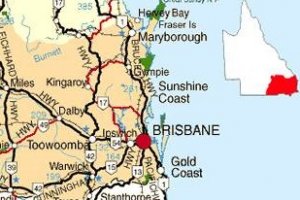South East Queensland is consistently the affordable housing hub of Australia

.
.
.
.
.
Moody’s Investors Service credit rating agency found that, in September 2020, Australian housing was the most affordable or near the most affordable in a decade for capital cities.
Moody’s found that Australian households with two income earners needed 23% of monthly income to meet mortgage repayments on new loans last month, and this figure is down from 25.1% from this time last year.
Moody’s vice president Alena Chen said, “affordability is likely to continue to improve on low mortgage rates and lower housing prices, and they expect low-interest rates for the foreseeable future and lower housing prices over the next 12 months, further improving housing affordability,”
“Conversely, household incomes will come under pressure in coming months as coronavirus-related government income support measures end, but in respect of housing affordability, we do not expect this to outweigh low mortgage interest rates and lower housing prices.”
A recent report from electronic settlements platform PEXA found that from January to September 2020, the overall median settlement price fell 14% in Victoria and 9% in New South Wales.
Although PEXA's Property and Mortgage Insights report shows a slight lift in NSW property values in the September quarter, while Victoria declined almost 5% for the period.
The PEXA’s report stated, “Consumers expect a further decline in housing market activity, likely based on a fall in GDP, wage growth stagnation and a consequent reduction in discretionary spending, slowing population growth linked to migration and limited avenues for further monetary policy responses given record low-interest rates,”
“An additional dip in economic conditions following the easing of fiscal stimuli would likely result in house prices and housing activity declining further in the medium term.
“Even after recovery in the key drivers of housing activity, there is likely to be a lag before we see the effects in property values and sales.”
PEXA found that there were 7,000 fewer listings in the first nine months of 2020, compared to the averages of 2017, 2018 and 2019.
Looking ahead PEXA predicts that GDP and household income are expected to remain weak over the next few quarters, indicating a downside risk for Australia's housing market activities in the short-to-medium term.
While border closures will reduce net migration and housing demand, PEXA notes that a fall in overseas student numbers will likely reduce demand for rental properties, especially around universities and in capital cities.
“As a large proportion of migration comes from students who remain in Australia after finishing their studies, the effect on the overall housing market could be quite long-lived.”
Close to zero interest rates are likely to remain for the medium term, which the report says would help “dampen the magnitude” of any decline in housing market activity.
The Reserve Bank of Australia (RBA) is expected to consider a cash rate cut in its November meeting, a move that could see the official cash rate slashed from its already historic low of 0.25 per cent.
In Sydney, Moody’s found that new borrowers needed 29.9% of household income to meet mortgages repayments in September, compared with 30.9% a year earlier and 32.7% on average over the last 10 years.
Sydney’s median house price fell 1.6% over the five months to September, this is still a rise of 6.7% over the year.
In Melbourne, new borrowers needed 24.6% of household income to meet mortgage repayments in September, compared with 27% a year earlier.
Melbourne’s median house price fell 2.2% in the five months to September, this is an increase of 4.1% over the year to September.
Brisbane borrowers needed 18.7% of household income to meet mortgage repayments. This is the lowest in a decade and down from 21% a year earlier, Moody's notes.
Brisbane house prices have remained stable over the year to September.
And Australia’s most affordable capital city for housing, Perth saw new borrowers needing 15% of household income to meet mortgage repayments last month, the lowest in a decade, and down from 17.4% on last year, according to Moody's.
Perth’s median house price declined 1.1% over the year to September.
Source: ABS, CoreLogic, Moody's Investors Service, RBA.
